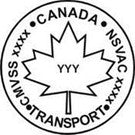
Our Tips on How to Choose a Car Seat
Picking the right car seat can feel like a big decision – whether you’re welcoming a new addition to the family, or your little one is growing up. To help make things easier, Canadian Tire Roadside Assistance® has put together a list of things you can keep in mind when shopping.
1. Size
The type of car seat you choose to buy can be dependent on the child’s age, weight, and height.
Transport Canada recommends [1]:
| Car Seat Type | Age | Weight | Height |
|
Rear-facing |
Newborns and young toddlers |
4-40 lbs |
19-43 inches |
|
Forward-facing |
2 years old or more |
22-65 lbs |
28-54 inches |
|
Booster seat |
4 to 8 years old |
40-100 lbs |
4’9 inches |
Remember the height and weight limits of each seat may vary. It is important to read the specifications on each seat carefully in your manual and consult a car seat technician, if possible. Each province and territory may have its own restrictions. For more information, please consult your provincial or territorial website.
2. Styles
Now that you have an idea of which car seat type you may need, it can be helpful to determine which style of car seat suits you.
Rear-facing car seats
|
Style |
Description |
|
Detachable Base
Graco SnugRide 35 Lite LX Car Seat
|
The detachable base provides more mobility by allowing the car seat to be easily moved with the baby in it. The height and weight limits of this style may be lower than other options, so it may be a suitable suitable choice for premature or small newborns. |
|
Convertible
Evenflo EveryFit 4-in-1 Convertible Car Seat
|
This car seat can be used as both a rear-facing seat and then changed to a forward-facing seat when your child has grown. These seats typically have a higher height and weight limit and will grow with your child. |
Forward-facing car seats
|
Style |
Description |
|
Convertible
|
This style can be used as forward and/or rear-facing. Convertible car seats can be installed in your car once and then left in the car. Because of this, you may find it helpful to have a convertible car seat for each vehicle you own to reduce reinstalling it. |
|
Combination
Evenflo Maestro Sport Car Seat, Grey
|
Combination car seats can start out as a harnessed forward-facing seat, that can later turn into a booster seat as your child grows in weight and height. |
Booster Seats
|
Style |
Description |
|
High back
Harmony High Back Booster Car Seat with Latch
|
Children who are smaller are recommended [1] to use a high back booster seat as it provides a better seat belt fit. Many high back boosters can be converted to a backless booster, too.
|
|
Low-back booster
Diono Solana 2 No Back Booster Seat
|
Low-back boosters help children who have outgrown their forward-facing car seat but need the assistance to fit the vehicle’s adult seat belt. |
3. Features
Once you’ve decided which size and style of car seat suits your little one, it is helpful to research the extra features car seats can have.
Some of features that you may find are:
- Five-point harness. This harness with a buckle, two waist straps, two shoulder straps, and one strap between the passenger’s legs helps to hold the child in place.
- Some seats have an adjustable recline.
- Transport Canada National Safety Mark. Provincial and territorial laws require car seats meet safety standards and bear the National Safety Mark of certification [1].

4. Expiration Date
Most child car seats and booster seats sold in Canada have an expiry date on them [1]. Even though this is not required by regulation, many companies include the date of manufacture and expiration date on a label on the seat and/or in the accompanied manual. For any questions regarding expiry date for a specific child car seat or booster seat, please contact the manufacturer.
Expiry dates are important because over time [2]:
- Use and sunlight exposure can weaken plastic
- Safe-use labels may fade
- Safety regulations and standards may have changed
Correct car seat installation can be an area of concern for many parents – especially if this is your first time buying a car seat. Transport Canada has a guide to installing a child car seat and booster seat to help!
5. Canadian Tire Roadside Assistance®
When you’re travelling with the family, have Canadian Tire Roadside Assistance® by your side.
Roadside Assistance provides service 24/7 across Canada and the USA. From towing to any destination of your choice within the distance limits of the plan selected* to great customer service, discover all the benefits‡ Canadian Tire Roadside Assistance® has to offer.
For assistance dial #TOW🞁 or call 1-888-727-7478, even if you are not a current member.
Compare Canadian Tire Roadside Assistance® Membership Plans here.
*Terms and conditions apply. Subject to the restrictions and limitations of the plan selected. For complete membership features, plan details and terms and conditions visit canadiantire.ca/roadside.
🞁Standard wireless rates apply. Not available through all carriers.
‡Discounts subject to change at any time. For all discounts that are currently available, participating merchants, locations and full discount terms and conditions, view the Member Offers page on canadiantire.ca/roadside or visit perkopolis.com.
[1] Transport Canada: https://tc.canada.ca/en/road-transportation/child-car-seat-safety/choosing-child-car-seat-booster-seat#_The_four_stages
[2] Transport Canada: https://tc.canada.ca/en/road-transportation/motor-vehicle-safety/children-s-car-seats-booster-seats-how-long-are-they-safe







